A Purchase Order is an official document that is sent by the seller or vendor to the purchaser. The key purpose of a purchase order is to specify the terms of purchase that exist between both the seller and the buyer. The purchase order is a formal document that enlists all the terms and conditions of the agreement along with the specification of each item or service that the vendor is bound to deliver. This order shows the buyer what he ordered and what the company has sent to him or her. Typically every purchase order is different in nature and description but the key purpose of a PO is the same so it’s quite possible to enlist the key elements of a purchase order.
Blue Purchase Order Design:
Here is a good looking blue Purchase Order Design to help you prepare your own design quickly.
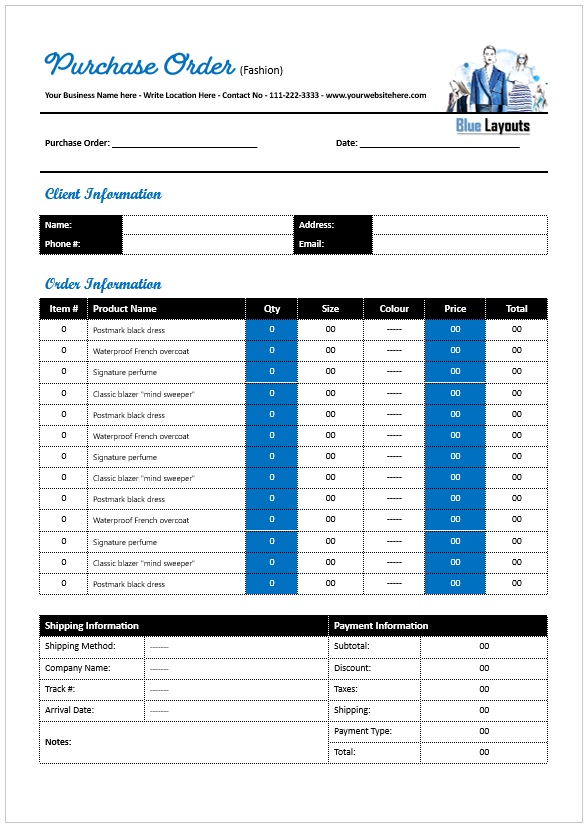
Another simple yet effective Purchase Order Sample to assist you.
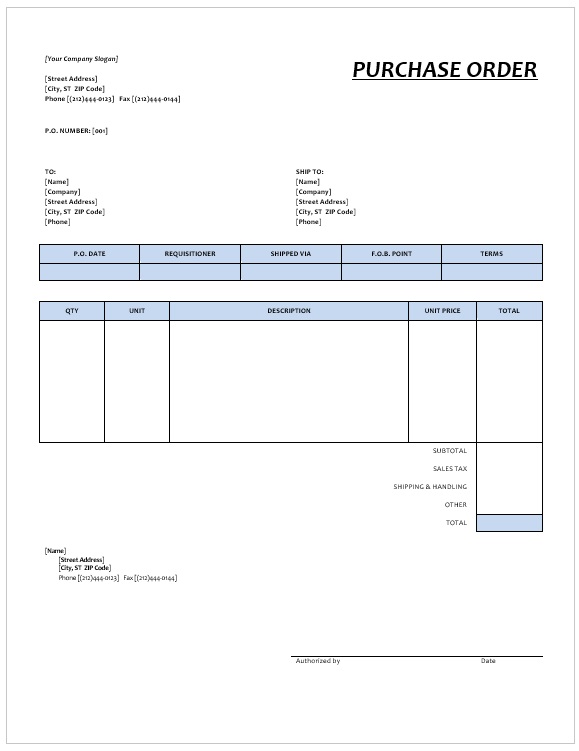
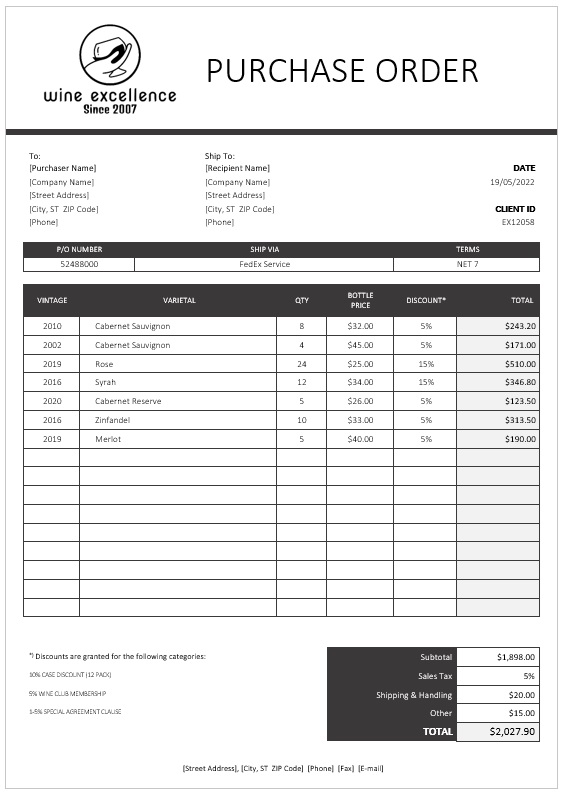
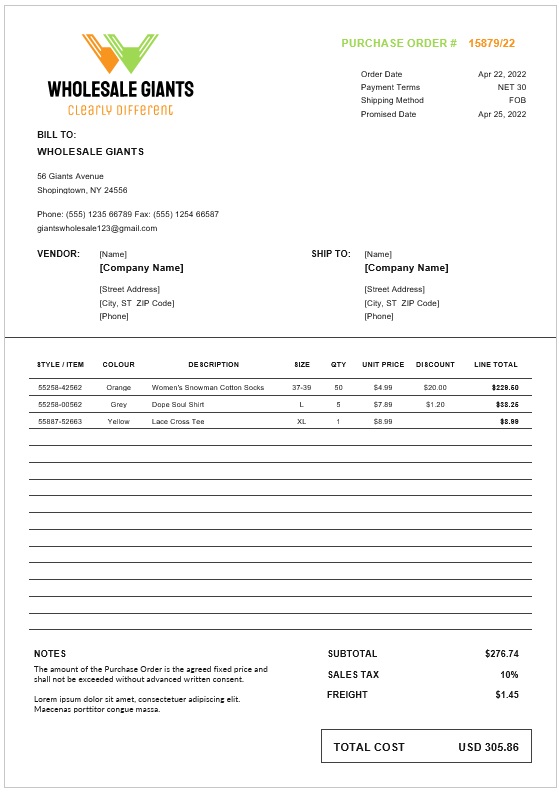
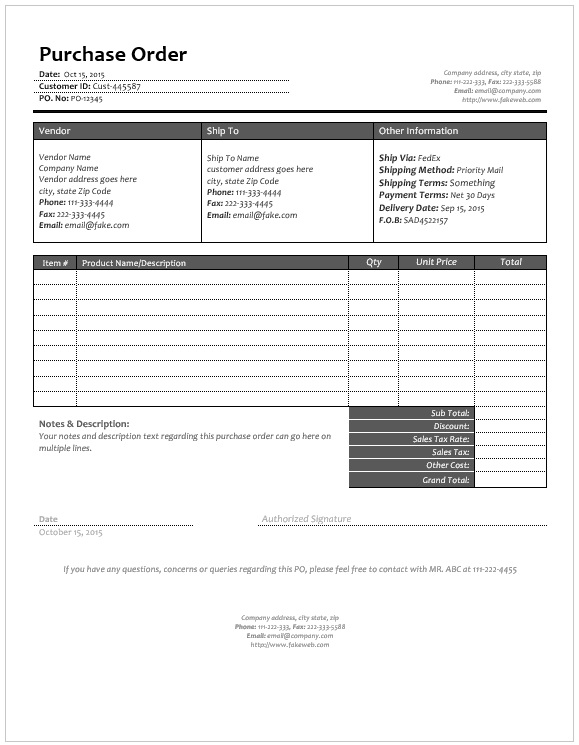
Purchase Order Template is an MS Word template. This is a sales-related word template. Here goes its preview and download link below,

Here is the download link,
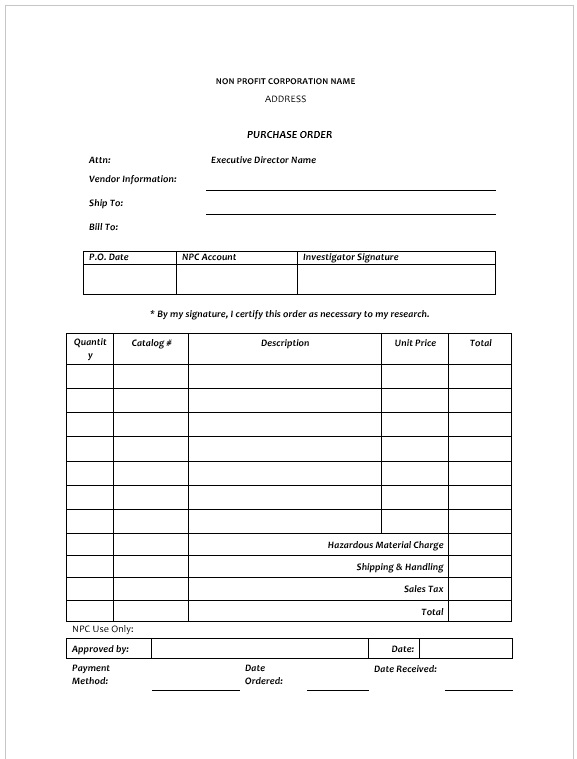
Purchase Order Form
This is a Purchase Order Form in MS Word Format. You can download this Purchase Order Template for free by clicking on the button below the preview thumbnail. This is a professional design template that allows anyone to record and afterward track purchase orders easily and effectively. This purchase order template also includes PO instructions and a place for the company address as well as the logo. Here is its preview,
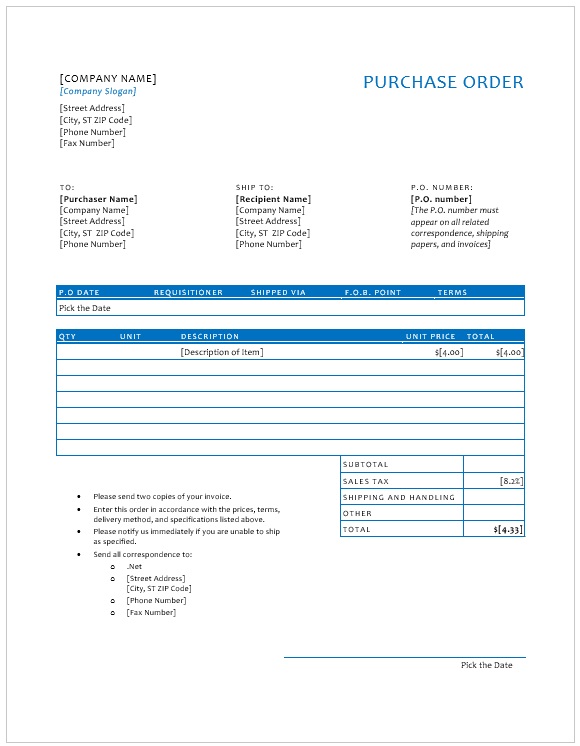
Here is a link to download this purchase order template,
Purchase Order Log Template
Here is a Purchase Order Log Template. This template allows you to record and track purchase orders sequentially. Once downloaded, this Purchase Order Log Template can be used to record purchase orders issued, received, and money on hold. This is a professionally designed MS Word 2003 template and such templates are very flexible to modify and utilize in any business environment.
Here is a preview of this Purchase Order Log template,
Here is its download link,
Key Elements of a Purchase Order:
- Item Description:
Items you get are the same that you ordered that’s why it’s essential that the purchase order clearly provide details about the items or products included in the shipment that was ordered by the buyer or if the company offered some alternates and the buyer accepted it. If the buyer has agreed to buy the new or substitute products, it’s necessary to send the purchase order which contains the new items list, not the old or previous ones. - Quantity and Unit:
this step may seem easy but actually, it’s not as if you have to enlist each and every item that has come in the shipment. If a box contains 100 pieces and the entire shipment includes 10 boxes, it means there are 1000 items in the shipment. If the purchase is too big to send in one shipment, you better tell the buyer that the remaining items are coming in another shipment followed by the present one. - Price:
the purchase order should contain the detailed price per item, per package, and per ton. If the buyer has to pay for the shipment and packaging charges, mention that too. Also, it’s a must to mention the time duration in which the buyer is asked to make the payment. - Freight and handling charges:
it depends on the deal and agreement if the buyer will pay for the handling charges of the company. When the buyer agrees to pay the freight and handling charges, he or she pays it prior to the delivery and those charges are added to the sales invoice when the buyer receives the shipment, he doesn’t have to pay anything to the delivery staff. Whatever the agreement says or the buyer agrees to, this should be included in the purchase order. - Delivery date:
unless the buyer mentions that the shipment should arrive on a specific date, the vendor or seller is bound to deliver the items or product before or on the date, both parties agree to. As you know if you want the delivery urgent, it will charge more as compared to a standard time delivery. This means that you have to add the date on the purchase order so that the buyer knows exactly when the shipment will be delivered to his or her doorstep. - Receiver’s address:
in order to deliver the shipment to the correct person, his or her address is needed where the buyer wants to receive the delivery. This address is asked for and kept in the record when the buyer makes the order so that the company won’t have to contact him again and again. - Instructions (if any):
if the items in the delivery need to be handled with care in case the parcel contains fragile products, the buyer should be informed about that. This way before opening he will know how to carry and open the package.

MK Farooq, a Master’s degree holder in Computer Science, is driven by a passion to assist people in their daily tasks through the provision of high-quality documents and templates. With a strong foundation in technology and a keen understanding of documentation processes, MK Farooq has dedicated his career to simplifying the lives of individuals and businesses alike.
Leveraging his expertise, MK Farooq creates meticulously crafted templates and documents that cater to a wide range of needs, from project management to personal organization. His work is not just about providing tools but about empowering users to achieve efficiency and effectiveness in their endeavors.



